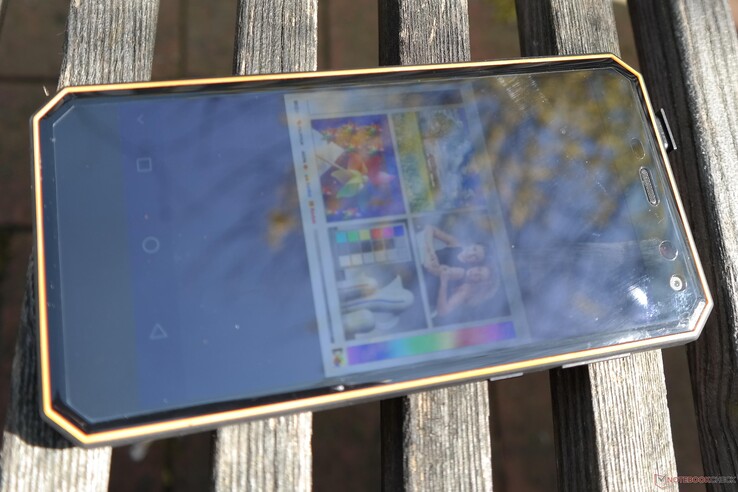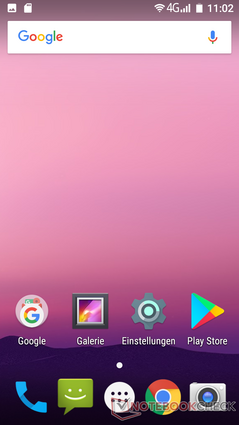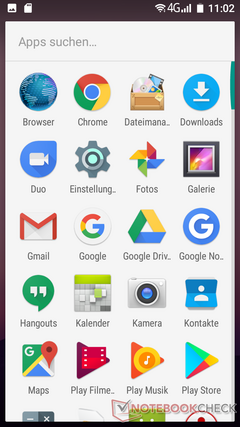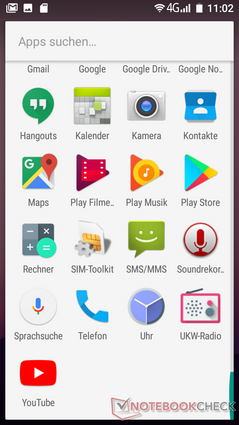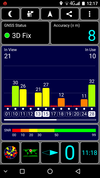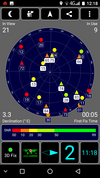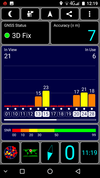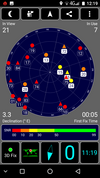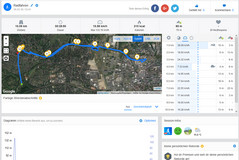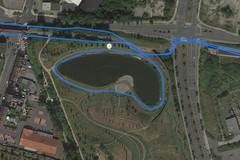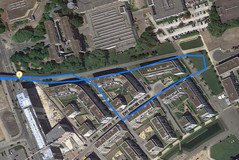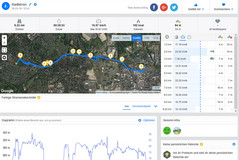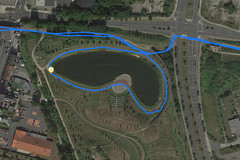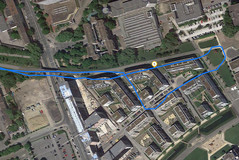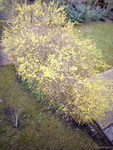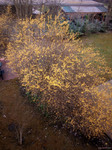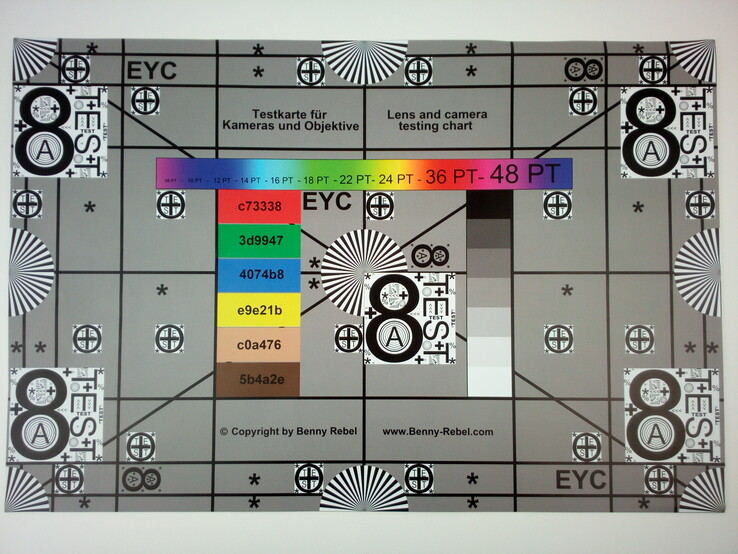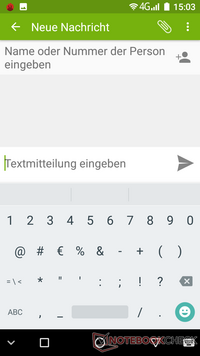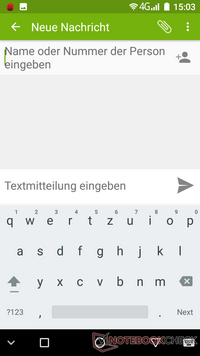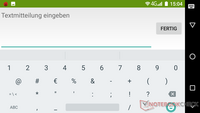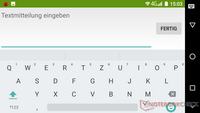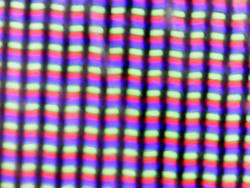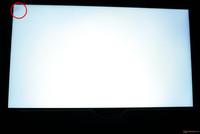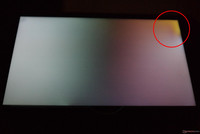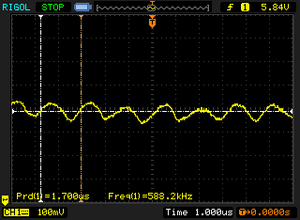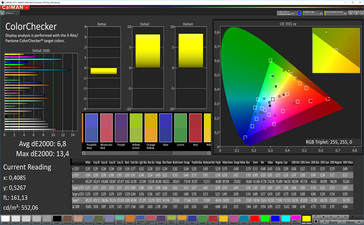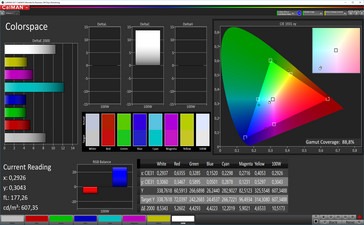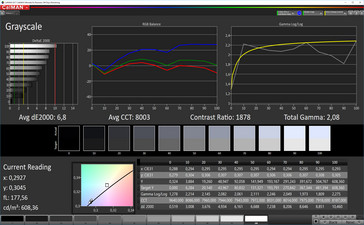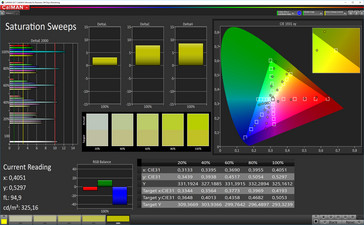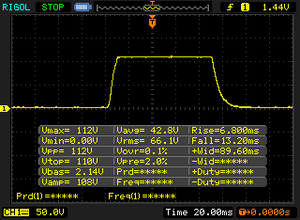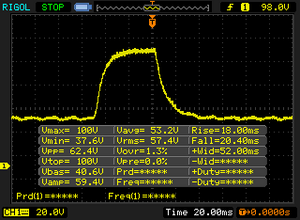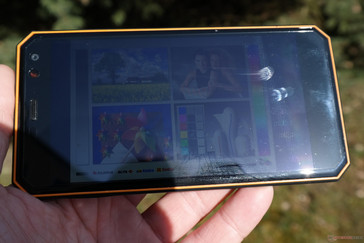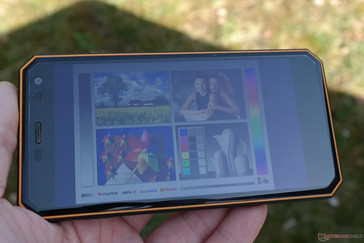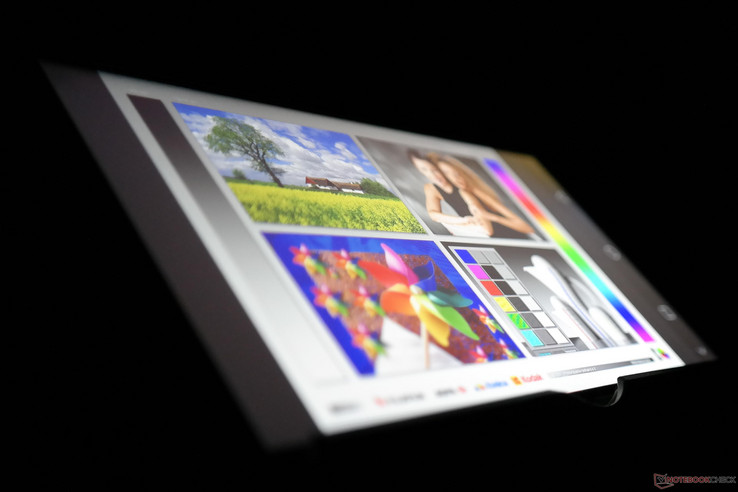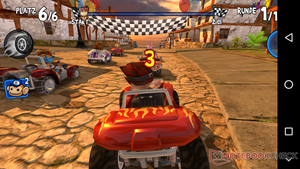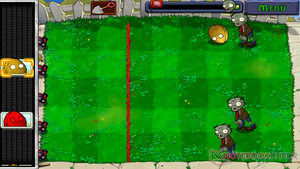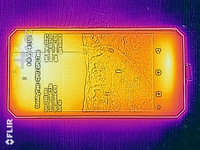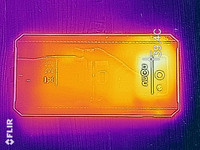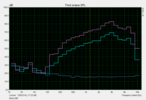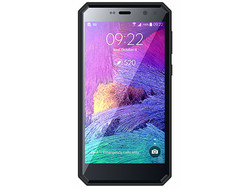Nomu M6 Smartphone Review
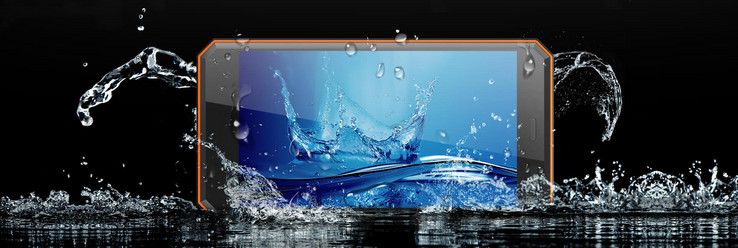
The Nomu M6 is a dual-SIM smartphone with a 5-inch IPS display in the 16:9 format and with a midrange SoC, namely the MT6737T by Mediatek. A camera can be found on the front as well as the back. At 3000 mAh, the battery is sufficient, but leagues away from the Blackview BV9000 Pro's capacity of 4000 mAh. 2 GB of RAM and 16 GB of internal storage are rather meager and the storage can be expanded to a maximum of only 32 GB via a microSD card.
The manufacturer specifications state that the company's smartphones are certified in accordance with the industrial standard IP68 and the military standard MIL-STD-810G. This certainly does not render these devices indestructible, though, as was proven by our 2015 review of the CAT S40.
Nomu is far from unrivaled in the market of rugged outdoor smartphones and the M6 is one of the most low-priced phones of its class at a price of around 120 Euros. In addition to the Blackview BV9000 Pro, the Nomu M6 has to compete with the Nomu S30 and the CAT S31, which has been licensed by the construction equipment manufacturer Caterpillar. The price range for the competing devices starts relatively low at 150 Euros (Nomu S30) and reaches up to 340 Euros (the Blackview in its maximum configuration).
Case - Robust and Waterproof Smartphone
The Nomu M6 with its 5-inch display is the smallest phone in the comparison group, and also the lightest at 182 grams. Due to its robust case, it has a rather bulky appearance, but this is typical for high-durability devices and should not affect the overall score too negatively because the comparison devices are no different in this regard. With its IP68 certificate and according to the military standard MIL-STD-810G, the M6 is suitable for almost any environment. It is dustproof, waterproof down to a depth of 1.2 meters for a duration of up to 35 minutes, and drop-proof for heights of up to 1.8 meters. Furthermore, it is nearly impossible for the smartphone to slip from the user's grasp thanks to its rubber frame. The smartphone gave a solid impression while holding it and it did not show any production defects. Each port has a rubber flap and the physical buttons are fixed tightly to the case.
Connectivity - Ascetic and Secure Smartphone
The Nomu M6 is equipped with a Micro-USB port supporting the transfer standard 2.0. The port is unable to output video signals, but it does support OTG, meaning external storage media and peripherals can be connected to the smartphone. An audio jack is installed at the phone's top edge. All ports are sealed with a rubber flap.
Like many other Chinese smartphones of the low-price segment, the Nomu M6 utilizes a Mediatek MT6737T with an ARM Mali-T720 MP2 as its graphics unit. This entry-level SoC suffices to run the Android 7.0 system fluently, but the chip was not suitable for more demanding applications even in the year of its release, so users should focus on simple apps. At 2 GB of RAM and 16 GB of flash storage, the smartphone offers enough capacity for most apps, but users should refrain from trying to run graphically demanding games. If so desired, the device can handle two SIM cards simultaneously, but the second SIM will occupy the microSD slot, forcing the user to choose between these two. MicroSD cards of up to 32 GB are supported and can be formated as internal or external storage. Apps can be installed on the memory card.
The slots for the memory- and SIM cards are accessible from the outside and are protected by flaps, keeping the device water- and dustproof. The buttons on the left and right sides of the device can be felt easily and have a clear feedback. The power button and the volume control can also be used for the photo feature, which we will get back to later. Of course, we submerged the smartphone into water and dropped it to the ground. Afterwards, the back button started working on its own accord. The screws seem to be fastened too tightly here.
Software - Pure Android without Clutter
Communication and GPS - Fast Localization
The Nomu M6 accesses the mobile data network via LTE Cat. 6. The frequency coverage is not exactly broad, but it does cover the necessary bands within Europe. We did not encounter any reception problems within a bigger city.
Our test device is equipped with a slow b/g/n Wi-Fi adapter, leading to subpar transfer rates. The M6 and the CAT S31 bring up the rear of our comparison field in this area.
| Networking | |
| iperf3 transmit AX12 | |
| Nomu S30 | |
| Blackview BV9000 Pro | |
| Nomu M6 | |
| CAT S31 | |
| iperf3 receive AX12 | |
| Blackview BV9000 Pro | |
| Nomu S30 | |
| CAT S31 | |
| Nomu M6 | |
Outdoors, the M6 was able to fix our location relatively fast with an accuracy of up to 7 meters. Some of the competing devices were even more accurate in our test. The M6 supports not only GPS, but also GLONASS. The indoors results with the "GPS Test" tool were similar, with an accuracy of 8 meters.
In order to assess the phone's outdoor abilities further, we took the M6 on a bike ride. The comparison with the professional navigation device Garmin Edge 500 shows a total deviation of more than half a kilometer on a test track with an overall length of about 10 km. The M6 used significant shortcuts at two important points. The phone's localization abilities are sufficient for everyday use, but we had higher expectations for an outdoor device.
Call and Voice Quality
The Nomu M6 offers optional dual-SIM, as long as the user can do without a microSD card. The telephone app used by Nomu is Google's standard app delivered with Android. The voice quality is decent: The conversation partner can be heard clearly, but the earpiece's volume could be a bit higher. A slight buzzing noise can be heard. The microphone picks our voice up well. Voices are still audible clearly in hands-free mode. Basses are lacking, which diminishes the overall voice quality.
Cameras - Not Only Suitable for Snapshots
The front camera has a resolution of up to 8 MP. The test photo to the right was taken under optimum conditions. The color shades are easily discernible, but the front camera lacks detail overall and there is visible picture noise under bad lighting conditions. According to the manufacturer, the main camera is made by Sony and has a resolution of 13 MP. On the Nomu website, however, only 8 MP are listed. Photos taken in daylight are rather good, showing lots of detail at close range. The dynamic range is decent and even a blur effect is available, comparable to the effect usually offered in reflex cameras.
The camera seems to be almost on a par with those installed in the iPhone X and the OnePlus 5T, though the sharpness is slightly worse. As soon as the ambient light is darker, though, pictures taken with the camera are much too dark and completely out of focus.
The main camera is able to record videos in Full HD (1920x1080 pixels, 16:9), while the front camera manages only 640x480 pixels. Overall, the main camera leaves a much better impression, not only because of its autofocus feature, but also because of its richer color reproduction.
Quite handy: The camera can be activated with a double-tap on the on/off button and the volume buttons can be used to trigger a photograph.
The main camera also had to prove its worth under controlled lighting conditions in our test laboratory. The ColorChecker Passport shows that the colors are generally rather bright and rich. The grayscales are on the warmer side and especially the white seems overexposed. When assessing the color accuracy, we noticed that the colored areas looked rather grainy. The test chart was reproduced relatively well, but the contours had a somewhat frayed appearance. The level of detail is good, though, and the colors overall look natural. The strongest deviations were limited to the brightness.
Accessories and Warranty
The Nomu M6 comes with a charging cable and the corresponding power supply, and with safety instructions and a quick start guide. No other accessories are available from the manufacturer. As the smartphone has a CE marking and is officially available without a contract from various Central European online stores, Nomu offers a one-year warranty for it. Hence, it can also be used as a prepaid smartphone with a discounter SIM card.
Please see our Guarantees, Return Policies and Warranties FAQ for country-specific information.
Input Devices & Handling
The Nomu M6 is operated via the capacitive touchscreen which supports up to 5-point gestures. The reactions seemed slightly delayed in a test with Gismarts Real Piano.
The touchscreen can be used easily, even though it is covered by a protective foil out-of-the-box that is rather hard to remove. Sadly it does not cover the display entirely, but the touchscreen is still responsive near the edges of the foil and in the corners. Nomu uses the Android standard keyboard layout. Users preferring a different layout can download one from the Google Play Store. The physical buttons at the sides give a high-quality impression and sit snugly in their slots on the case. The pressure point is fine as well, but the haptic perception could have been facilitated by using different surfaces.
Display
The IPS display of the Nomu M6 has a resolution of 1280x720 pixels and an aspect ratio of 16:9. The 5-inch panel displays the screen content with an adequate sharpness and our measurements showed good results as well. At an average of 578 cd/m², the display has a high brightness and thanks to the low black value of only 0.31 cd/m², it offers a high contrast (1968:1). The results remain at a similar level when the ambient light sensor is activated and the dark and bright areas are distributed evenly (APL 50). The brightness distribution is not very homogenous, though. Furthermore, a lot of backlight bleeding is visible in the lower right corner, whereas the upper right corner has a dark spot. This basically annuls the display's quality.
| |||||||||||||||||||||||||
Brightness Distribution: 90 %
Center on Battery: 610 cd/m²
Contrast: 1968:1 (Black: 0.31 cd/m²)
ΔE ColorChecker Calman: 6.8 | ∀{0.5-29.43 Ø4.78}
ΔE Greyscale Calman: 6.8 | ∀{0.09-98 Ø5}
Gamma: 2.08
CCT: 8003 K
| Nomu M6 IPS, 1280x720, 5" | Blackview BV9000 Pro IPS, 1440x720, 5.7" | CAT S31 IPS, 1280x720, 4.7" | Nomu S30 IPS, 1920x1080, 5.5" | |
|---|---|---|---|---|
| Screen | -10% | 11% | -15% | |
| Brightness middle (cd/m²) | 610 | 621 2% | 784 29% | 423 -31% |
| Brightness (cd/m²) | 578 | 598 3% | 750 30% | 421 -27% |
| Brightness Distribution (%) | 90 | 91 1% | 92 2% | 93 3% |
| Black Level * (cd/m²) | 0.31 | 0.64 -106% | 0.45 -45% | 0.26 16% |
| Contrast (:1) | 1968 | 970 -51% | 1742 -11% | 1627 -17% |
| Colorchecker dE 2000 * | 6.8 | 5.5 19% | 4.28 37% | 7.8 -15% |
| Colorchecker dE 2000 max. * | 13.4 | 10 25% | 8.75 35% | 14.5 -8% |
| Greyscale dE 2000 * | 6.8 | 5.1 25% | 6.1 10% | 9.8 -44% |
| Gamma | 2.08 106% | 2.52 87% | 2.49 88% | 2.32 95% |
| CCT | 8003 81% | 7362 88% | 7175 91% | 9828 66% |
* ... smaller is better
Screen Flickering / PWM (Pulse-Width Modulation)
| Screen flickering / PWM detected | 588 Hz | ≤ 30 % brightness setting | |
The display backlight flickers at 588 Hz (worst case, e.g., utilizing PWM) Flickering detected at a brightness setting of 30 % and below. There should be no flickering or PWM above this brightness setting. The frequency of 588 Hz is quite high, so most users sensitive to PWM should not notice any flickering. In comparison: 53 % of all tested devices do not use PWM to dim the display. If PWM was detected, an average of 8111 (minimum: 5 - maximum: 343500) Hz was measured. | |||
Display Response Times
| ↔ Response Time Black to White | ||
|---|---|---|
| 20 ms ... rise ↗ and fall ↘ combined | ↗ 6.8 ms rise | |
| ↘ 13.2 ms fall | ||
| The screen shows good response rates in our tests, but may be too slow for competitive gamers. In comparison, all tested devices range from 0.1 (minimum) to 240 (maximum) ms. » 42 % of all devices are better. This means that the measured response time is similar to the average of all tested devices (20.2 ms). | ||
| ↔ Response Time 50% Grey to 80% Grey | ||
| 38.4 ms ... rise ↗ and fall ↘ combined | ↗ 18 ms rise | |
| ↘ 20.4 ms fall | ||
| The screen shows slow response rates in our tests and will be unsatisfactory for gamers. In comparison, all tested devices range from 0.165 (minimum) to 636 (maximum) ms. » 56 % of all devices are better. This means that the measured response time is worse than the average of all tested devices (31.6 ms). | ||
Performance - Only Just Sufficient
The Nomu M6 is powered by a Mediatek MT6737T, which makes it the second-weakest device in our comparison field, with only the CAT Phone performing even worse. The quad-core SoC consists of four Cortex-A53 cores, which run at a clock speed of up to 1.44 GHz. The system is supplemented by 2 GB of RAM as well as an ARM Mali-T720 MP2 GPU. CPUs at this speed level will probably be discontinued in the near future and are currently only used in very low-end configurations. Even the same company's other competitor, the Nomu S30, is faster and costs barely a few Euros more by now. Still, the most important applications should run on the Nomu M6 without any trouble as well.
| AnTuTu v6 - Total Score (sort by value) | |
| Nomu M6 | |
| Blackview BV9000 Pro | |
| CAT S31 | |
| Nomu S30 | |
| Average Mediatek MT6737T (35747 - 40981, n=9) | |
| PCMark for Android | |
| Work performance score (sort by value) | |
| Nomu M6 | |
| Blackview BV9000 Pro | |
| CAT S31 | |
| Nomu S30 | |
| Average Mediatek MT6737T (2759 - 4607, n=7) | |
| Work 2.0 performance score (sort by value) | |
| Nomu M6 | |
| Blackview BV9000 Pro | |
| CAT S31 | |
| Nomu S30 | |
| Average Mediatek MT6737T (2249 - 3487, n=8) | |
| Geekbench 4.4 | |
| 64 Bit Single-Core Score (sort by value) | |
| Nomu M6 | |
| Blackview BV9000 Pro | |
| CAT S31 | |
| Average Mediatek MT6737T (648 - 682, n=6) | |
| Average of class Smartphone (844 - 9776, n=55, last 2 years) | |
| 64 Bit Multi-Core Score (sort by value) | |
| Nomu M6 | |
| Blackview BV9000 Pro | |
| CAT S31 | |
| Average Mediatek MT6737T (1807 - 1932, n=6) | |
| Average of class Smartphone (4134 - 34246, n=55, last 2 years) | |
| Compute RenderScript Score (sort by value) | |
| Nomu M6 | |
| Blackview BV9000 Pro | |
| Average Mediatek MT6737T (1077 - 1241, n=5) | |
| Average of class Smartphone (5364 - 28121, n=42, last 2 years) | |
| GFXBench (DX / GLBenchmark) 2.7 | |
| T-Rex Onscreen (sort by value) | |
| Nomu M6 | |
| Blackview BV9000 Pro | |
| CAT S31 | |
| Nomu S30 | |
| Average Mediatek MT6737T (9.7 - 20, n=9) | |
| Average of class Smartphone (12 - 166, n=157, last 2 years) | |
| 1920x1080 T-Rex Offscreen (sort by value) | |
| Nomu M6 | |
| Blackview BV9000 Pro | |
| CAT S31 | |
| Nomu S30 | |
| Average Mediatek MT6737T (9.8 - 11, n=9) | |
| Average of class Smartphone (22 - 954, n=157, last 2 years) | |
| GFXBench 3.0 | |
| on screen Manhattan Onscreen OGL (sort by value) | |
| Nomu M6 | |
| Blackview BV9000 Pro | |
| CAT S31 | |
| Nomu S30 | |
| Average Mediatek MT6737T (4 - 8.9, n=9) | |
| Average of class Smartphone (18 - 166, n=159, last 2 years) | |
| 1920x1080 1080p Manhattan Offscreen (sort by value) | |
| Nomu M6 | |
| Blackview BV9000 Pro | |
| CAT S31 | |
| Nomu S30 | |
| Average Mediatek MT6737T (3.9 - 4.1, n=9) | |
| Average of class Smartphone (12 - 606, n=158, last 2 years) | |
| GFXBench 3.1 | |
| on screen Manhattan ES 3.1 Onscreen (sort by value) | |
| Nomu M6 | |
| Blackview BV9000 Pro | |
| Nomu S30 | |
| Average Mediatek MT6737T (2.6 - 6.3, n=9) | |
| Average of class Smartphone (11 - 166, n=159, last 2 years) | |
| 1920x1080 Manhattan ES 3.1 Offscreen (sort by value) | |
| Nomu M6 | |
| Blackview BV9000 Pro | |
| Nomu S30 | |
| Average Mediatek MT6737T (2.5 - 2.6, n=9) | |
| Average of class Smartphone (8.4 - 413, n=158, last 2 years) | |
| GFXBench | |
| on screen Car Chase Onscreen (sort by value) | |
| Blackview BV9000 Pro | |
| Nomu S30 | |
| Average of class Smartphone (5.5 - 154, n=161, last 2 years) | |
| 1920x1080 Car Chase Offscreen (sort by value) | |
| Blackview BV9000 Pro | |
| Nomu S30 | |
| Average of class Smartphone (3.5 - 216, n=160, last 2 years) | |
We conducted our browser benchmarks with the pre-installed Google Chrome 65. The results of the Nomu M6 met the expectations for a smartphone of its class. Subjectively speaking, browsing the web was fast enough and even complex websites were rendered quickly.
| JetStream 1.1 - Total Score | |
| Blackview BV9000 Pro (Chrome Mobile 53) | |
| Nomu S30 (Chrome 57) | |
| Average Mediatek MT6737T (17.4 - 22, n=9) | |
| Nomu M6 (Chrome 65) | |
| CAT S31 | |
| Octane V2 - Total Score | |
| Average of class Smartphone (2228 - 121337, n=201, last 2 years) | |
| Blackview BV9000 Pro (Chrome Mobile 53) | |
| Nomu M6 (Chrome 65) | |
| Nomu S30 (Chrome 57) | |
| Average Mediatek MT6737T (2684 - 3483, n=9) | |
| CAT S31 | |
| Mozilla Kraken 1.1 - Total | |
| Nomu S30 (Chrome 57) | |
| CAT S31 | |
| Blackview BV9000 Pro (Chrome Mobile 53) | |
| Nomu M6 | |
| Average Mediatek MT6737T (10544 - 13300, n=9) | |
| Average of class Smartphone (257 - 28190, n=156, last 2 years) | |
* ... smaller is better
The Nomu M6 offers 16 GB of flash storage, with 12 GB available to the user after the first boot. The storage performed decently in our benchmarks, but was still slightly below average in the comparison field. The only competitor that performed significantly better was the much more expensive Blackview BV9000 Pro.
We tested the speed of the micro SD card slot with our reference card Toshiba Exceria Pro M501 (max. read speed: 270 MB/s, max. write speed 150 MB/s). The slot remained far behind the card's full potential and came in last of our comparison group by a long way.
| Nomu M6 | Blackview BV9000 Pro | CAT S31 | Nomu S30 | Average 16 GB eMMC Flash | Average of class Smartphone | |
|---|---|---|---|---|---|---|
| AndroBench 3-5 | 169% | 58% | 44% | 30% | 1962% | |
| Sequential Read 256KB (MB/s) | 223 | 244.7 10% | 71.1 -68% | 242 9% | 164.5 ? -26% | 2216 ? 894% |
| Sequential Write 256KB (MB/s) | 91 | 174.6 92% | 62.1 -32% | 194.9 114% | 43 ? -53% | 1837 ? 1919% |
| Random Read 4KB (MB/s) | 12.78 | 72.6 468% | 14.28 12% | 27.99 119% | 21.7 ? 70% | 294 ? 2200% |
| Random Write 4KB (MB/s) | 11.38 | 12.72 12% | 14.81 30% | 8.84 -22% | 8.08 ? -29% | 334 ? 2835% |
| Sequential Read 256KB SDCard (MB/s) | 28.69 ? | 76.7 ? 167% | 81.8 185% | 36.94 ? 29% | 59.1 ? 106% | |
| Sequential Write 256KB SDCard (MB/s) | 18.72 ? | 68.5 ? 266% | 59.5 218% | 21.52 ? 15% | 39.8 ? 113% |
Games - Nomu M6 Suitable for Simple Games
The Nomu M6's integrated graphics unit quickly reaches its limits with more demanding games. It is unable to run Asphalt 8 or Beach Buggy Racing fluently on high details, forcing the user to reduce the level of detail. Real Racing 3 is a borderline case as well and could really use a few more frames. Nevertheless, all games in the Play Store remain playable, even though there might be some smaller stutters for some of the games. The touchscreen reacts to inputs with an average accuracy. During the Real Piano test, it seemed to ignore some of our inputs, but this should be less noticeable during everyday operation. The sensors, however, recognized any movements of the smartphone reliably.
Emissions
Temperature
(+) The maximum temperature on the upper side is 38.2 °C / 101 F, compared to the average of 35.2 °C / 95 F, ranging from 21.9 to 247 °C for the class Smartphone.
(+) The bottom heats up to a maximum of 39.8 °C / 104 F, compared to the average of 34 °C / 93 F
(+) In idle usage, the average temperature for the upper side is 28.9 °C / 84 F, compared to the device average of 32.9 °C / 91 F.
Speakers
The Nomu M6's mono speakers offer a solid performance, as long as the volume is not turned up too high. At a medium volume level, the frequency response of mids and highs is quite balanced. However, at full volume, the highs rise too much and the mids drop slightly. Bass cannot be heard at any time. The smartphone has a rather high maximum volume at 89 dB(A).
Nomu M6 audio analysis
(+) | speakers can play relatively loud (88.8 dB)
Bass 100 - 315 Hz
(-) | nearly no bass - on average 29.4% lower than median
(±) | linearity of bass is average (11.9% delta to prev. frequency)
Mids 400 - 2000 Hz
(+) | balanced mids - only 4.1% away from median
(+) | mids are linear (3.9% delta to prev. frequency)
Highs 2 - 16 kHz
(±) | higher highs - on average 8.1% higher than median
(+) | highs are linear (5.5% delta to prev. frequency)
Overall 100 - 16.000 Hz
(±) | linearity of overall sound is average (22.9% difference to median)
Compared to same class
» 50% of all tested devices in this class were better, 7% similar, 43% worse
» The best had a delta of 11%, average was 35%, worst was 134%
Compared to all devices tested
» 67% of all tested devices were better, 6% similar, 27% worse
» The best had a delta of 4%, average was 24%, worst was 134%
Blackview BV9000 Pro audio analysis
(+) | speakers can play relatively loud (90.3 dB)
Bass 100 - 315 Hz
(-) | nearly no bass - on average 30.5% lower than median
(±) | linearity of bass is average (8.8% delta to prev. frequency)
Mids 400 - 2000 Hz
(±) | higher mids - on average 6.9% higher than median
(+) | mids are linear (6.7% delta to prev. frequency)
Highs 2 - 16 kHz
(±) | higher highs - on average 6.8% higher than median
(+) | highs are linear (5.7% delta to prev. frequency)
Overall 100 - 16.000 Hz
(±) | linearity of overall sound is average (24.7% difference to median)
Compared to same class
» 59% of all tested devices in this class were better, 7% similar, 34% worse
» The best had a delta of 11%, average was 35%, worst was 134%
Compared to all devices tested
» 74% of all tested devices were better, 5% similar, 20% worse
» The best had a delta of 4%, average was 24%, worst was 134%
CAT S31 audio analysis
(±) | speaker loudness is average but good (76.9 dB)
Bass 100 - 315 Hz
(-) | nearly no bass - on average 21.7% lower than median
(±) | linearity of bass is average (7.8% delta to prev. frequency)
Mids 400 - 2000 Hz
(±) | higher mids - on average 7% higher than median
(+) | mids are linear (6.8% delta to prev. frequency)
Highs 2 - 16 kHz
(±) | higher highs - on average 6.5% higher than median
(+) | highs are linear (4% delta to prev. frequency)
Overall 100 - 16.000 Hz
(±) | linearity of overall sound is average (26.6% difference to median)
Compared to same class
» 68% of all tested devices in this class were better, 5% similar, 27% worse
» The best had a delta of 11%, average was 35%, worst was 134%
Compared to all devices tested
» 81% of all tested devices were better, 4% similar, 15% worse
» The best had a delta of 4%, average was 24%, worst was 134%
Nomu S30 audio analysis
(+) | speakers can play relatively loud (90.8 dB)
Bass 100 - 315 Hz
(-) | nearly no bass - on average 28.4% lower than median
(+) | bass is linear (6.8% delta to prev. frequency)
Mids 400 - 2000 Hz
(±) | higher mids - on average 11.1% higher than median
(±) | linearity of mids is average (9.8% delta to prev. frequency)
Highs 2 - 16 kHz
(±) | higher highs - on average 9.7% higher than median
(±) | linearity of highs is average (9.5% delta to prev. frequency)
Overall 100 - 16.000 Hz
(-) | overall sound is not linear (33% difference to median)
Compared to same class
» 83% of all tested devices in this class were better, 1% similar, 15% worse
» The best had a delta of 11%, average was 35%, worst was 134%
Compared to all devices tested
» 92% of all tested devices were better, 1% similar, 7% worse
» The best had a delta of 4%, average was 24%, worst was 134%
Battery Runtime - Surprisingly Good
Power Consumption
Even in comparison to the quite energy-efficient Caterpillar smartphone, the Nomu M6 has a result that is better still. This is surprising, as Chinese companies are known for not putting a strong focus on energy efficiency and usually try to compensate with a bigger battery. The M6 proves that the opposite is possible as well.
| Off / Standby | |
| Idle | |
| Load |
|
Key:
min: | |
| Nomu M6 3000 mAh | Blackview BV9000 Pro 4180 mAh | CAT S31 4000 mAh | Nomu S30 5000 mAh | Average Mediatek MT6737T | Average of class Smartphone | |
|---|---|---|---|---|---|---|
| Power Consumption | -51% | -19% | -47% | -37% | -64% | |
| Idle Minimum * (Watt) | 0.74 | 1.04 -41% | 0.73 1% | 0.93 -26% | 0.811 ? -10% | 0.848 ? -15% |
| Idle Average * (Watt) | 1.49 | 2.14 -44% | 2.21 -48% | 2.31 -55% | 1.771 ? -19% | 1.434 ? 4% |
| Idle Maximum * (Watt) | 1.51 | 2.17 -44% | 2.25 -49% | 2.35 -56% | 2.09 ? -38% | 1.618 ? -7% |
| Load Average * (Watt) | 2.89 | 5.11 -77% | 2.99 -3% | 4.57 -58% | 5.12 ? -77% | 7.01 ? -143% |
| Load Maximum * (Watt) | 4.33 | 6.37 -47% | 4.12 5% | 6.1 -41% | 6.06 ? -40% | 11.3 ? -161% |
* ... smaller is better
Battery Runtime
Concomitant with the high energy efficiency, our test device also has a really good battery runtime. With the display turned on and the browser activated, it lasted almost 22 hours in idle mode, which is a very good performance. Not a single one of the comparison devices was able to reach a similarly long battery runtime, despite all of them having bigger batteries. Accordingly, the battery runtime in standby mode is longer as well.
| Nomu M6 3000 mAh | Blackview BV9000 Pro 4180 mAh | CAT S31 4000 mAh | Nomu S30 5000 mAh | |
|---|---|---|---|---|
| Battery runtime | -9% | 72% | 34% | |
| Reader / Idle (h) | 21.4 | 19 -11% | ||
| WiFi v1.3 (h) | 10.4 | 9.7 -7% | 17.9 72% | 13.9 34% |
| Load (h) | 4.6 |
Pros
Cons
Verdict
Imagine a 100-meter runner who usually places in the last third of the competition, but who is having the run of a lifetime today. He did everything right and can already see the finish line. Then he stumbles and sprawls and barely manages to slide through the finish line on the ground with his nose first, ranking the second to last place. The Nomu M6 is this runner.
The Nomu smartphone is small, lightweight, robust and stylish for its class. The hardware is still within reason for the low price and the cameras are above average. Fine, the transfer speed for SD cards and the Wi-Fi are not the fastest - but let us ignore that aspect for now.
The Nomu M6 leaves a balanced and solid impression. Almost all parameters meet the expectations, were it not for two things: First, one corner of the display is compressed too tightly, leaving behind an area of visible backlight bleeding. And second, the back button triggered on its own accord repeatedly.
Once we turned our attention to the display, we noticed areas of backlight bleeding big enough for the Death Star to land on. What were they thinking? Maybe we got a single defective device and the same is not true for all devices of this series, but this is a no-go. This seriously should not happen. This equals a scenario in which Nomu delivers smartphones with cracked displays out-of-the-box. By the way, towards the end of our testing, the M6 phone started operating itself on its own accord: The back button was activated repeatedly - it is most likely not a coincidence its location is in the corner with the backlight bleeding. Taken together, this hints at the smartphone being screwed too tightly in the affected area.
This is rather unfortunate, as the Nomu smartphone would otherwise be a clear budget recommendation for price-conscious outdoor enthusiasts.
Taking into account the problems with our current test device, though, we have to reduce the overall score. We contacted the manufacturer about this issue and might change the rating in the future.
Nomu M6
- 04/11/2018 v6 (old)
Florian Schaar




